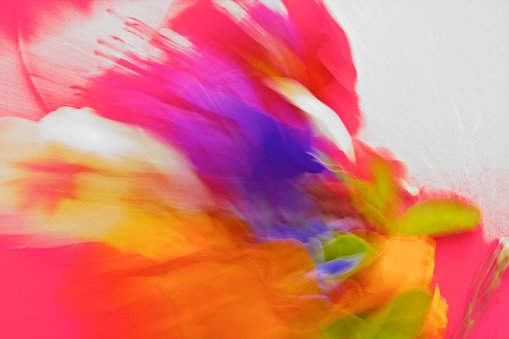Buildings are often painted in a variety of hues and styles. Applying paint to a building has three primary functions. First and foremost, it improves the structure’s aesthetic. In addition, it shields them from the destructive effects of water and sunshine, extending the life and durability of the building as a result. As a third benefit, it will provide a feeling of completeness as well as a sense of newness. Different types of paints for interior & exterior surfaces exist today from which you have an endless list to choose from.

Multinational corporations typically make and distribute the majority of the world’s paints. When it comes to naming their paint products, these companies stay away from utilizing technical terms. Instead, they make use of well-known brand names to draw in clients and increase the number of sales they make.
There are a variety of paints on the market. Both their technical parameters and brand names allow for classification. To someone who doesn’t know a lot about paints and how they work, this may be a little perplexing. For example, they may find it difficult to distinguish between oil paint and emulsion paint, oil paint and distemper paint, or silicon paint and rubber paint.
Customers thought velvet paint was a high-end item, according to our research. As a result, “Velvet” is a name used to describe “Apcolite Silk,” a form of shine. In an effort to capitalize on this lack of awareness and promote sales, well-known paint manufacturers are using this word.
The terms “paint sheen” and “paint finish” are often misunderstood by those looking to paint or renovate their homes. It’s impossible to determine whether you’re comparing apples to apples when comparing three or four different products from various firms. It’s possible that you’re contrasting an interior paint with an exterior paint, or a metal paint with a wood paint. Many people make mistakes because they don’t know enough about the many varieties of home paint. Knowing what goes into a paint can help you choose the correct kind of paint for your home or project.
Important components are used in the production of paints, and each one gives the paint a unique character. Let’s take a closer look at them. The following is a list of the fundamentals: The paint’s base is the most important component. Paint is made out of this substance.
Color Pigmentation 01.
Paint pigments are insoluble powders with very tiny particle sizes. They provide the paint color and opacity.
These fillers are used to enhance the paint’s physical attributes other than its color, including opacity or texture or simply to improve the ease of application. In addition to enhancing the paint’s durability, these additives also help to lower the paint’s expensive foundation.

02: Car or Binder
To keep the paint together, a vehicle is also known as the binder or resin. In addition, it holds the paint in place when it’s being applied to a surface. In addition, this element ensures that the paint will spread evenly.
Please check out Binder in Paint: Everything You Need to Know About
03. Thickener or Solvent
The fluidity of the paint is improved by the use of a solvent or thinner. It improves the paint’s spreading ability, which makes it more workable when applied to a surface. Thinner aids in the penetration of the paint into the porous surfaces, resulting in a more fluid and user-friendly paint.
04. Additives
Adding tiny amounts of additives to paints used in construction and building is common practice. Paint’s characteristics are altered as a result. Paint qualities including color opacity, pigment dispersion, and stability are all improved with the use of these additives.
Most of the elements listed above are found in all paints, regardless of the kind. Only the proportion of each component varies.
Read this topic, Basic Components of Paint, to learn more about paint’s many components.
Now, let’s have a look at the technical parameters of the 20 distinct varieties of paints. Using this advice, you’ll be able to choose the best paint for each given surface.
Paints of Various Sorts
Whitewash or Limewash
Water may be added to the combination of slaked lime or powdered chalk to make whitewash, a low-cost paint that can be applied to any surface. Whitening walls and ceilings that can withstand lime and water is the most common usage.
Fevicol, a vehicle or binder, is used in the correct amount to impart color and stability to the wall.
Apply two coats of lime paint for a bright white wall. It’s best to apply three coats of lime paint on the wall if you want vibrant colors. When painting a wall, apply the first layer of lime paint (lime + water + Fevicol) and then apply two coats of lime paint including the color pigment and vehicle or binder.
DIY whitewashing requires caution when combining lime with water, especially if you’re doing it yourself. During the first 5 to 10 minutes of mixing these two components, heat is created. Chemical reactions generate slaked lime while also emitting heat, which may inflict burns on exposed skin.

Before You Paint, Know These Qualities or Characteristics of an Ideal Paint.
When you apply paint to your home, you give it a finished look, newness, and a breath of fresh air. It also improves its appearance. In order to create paint, numerous elements must be combined in the correct proportions. To preserve and embellish your home, paints are applied to all surfaces. Painting a home may be a time-consuming and costly endeavor. As a result, before painting, it’s essential to compare the paint’s properties to those of an ideal paint. Using poor-quality paint will lead to deterioration of the paint and a lack of performance. If you’re going to paint your house, you need to know what to look for in an excellent paint.
The cost of the paint is directly related to the spreadability or covering power of the paint. A good paint should be able to cover a large surface area with a little amount of product. Always check the manufacturer’s brochure for details on coverage. Paint should be thin and homogeneous when applied to the surface.
Paint should be able to endure weather conditions including rain, heat, and wind for an extended period of time. Over the course of its intended use, the color shouldn’t fade or alter. The consistency of the paint should be such that it can be applied with a brush or a spraying instrument with ease
- THE KEY POINTS TO REMEMBER.
It is important that the paint be adhered to the surface adequately. It should have a high level of adhesion to the surface it will be applied on.
It should be visually appealing and appealing.
The initial cost must be relatively low, and it must be cost-effective in the long term.
After curing, the paint’s surface should be free of cracks. It’s important that it’s stretchable. It must be temperature-stable, for example. During the day and night, there is an average 20oC difference in temperature between the highest and lowest points. As a consequence, the wall, plaster, and so on might either grow or decrease in size.. This expansion/contraction of the paint coating must not cause it to fracture or break. Because of expansion and contraction, it must be flexible enough.
It must be able to resist corrosion and protect the substance it is applied on.
Paint should dry in a decent amount of time, but not too quickly.
When dried, an ideal paint will have no brush markings, shrinkage marks, cracks, spots, or other indicators of wear and tear.

MORE KEY POINTS TO REMEMBER
Are you fed up with the paint peeling off your walls? See if you can’t fix it yourself!!!
It is essential that paint does not enable molds and algae to develop on the surface.
Before, during, and after the paint is applied, the features of an ideal paint should be evaluated. Your home’s value and attractiveness will be enhanced if you apply the right paint. So, keep reading to find out more about the many kinds of wall paints that are available.
